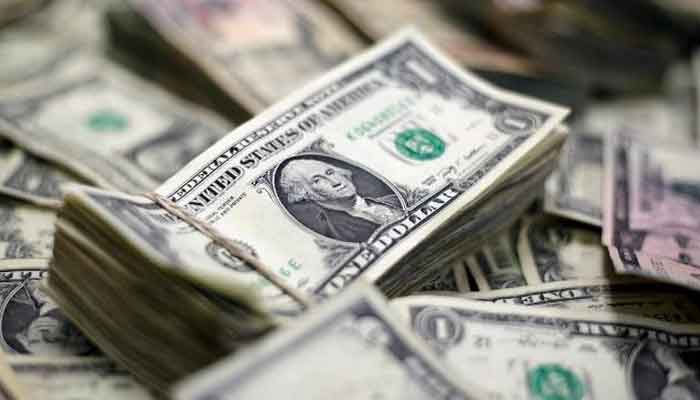News Analysis: Unpacking the G2G investment model
Neither charitable nor brotherly, G2G investing countries develop a robust business case that guarantees an appropriate risk-adjusted return
Government to Government (G2G) transactions are generally considered an effective shortcut to foreign direct investment in emerging markets. With no structural reform ‘strings’ attached and complementary strategic considerations, they provide welcome relief to economically distressed nations struggling to attract long-term private capital.
Neither charitable nor brotherly, G2G investing countries develop a robust business case that guarantees an appropriate risk-adjusted return on their capital and accelerates the growth of their state-controlled enterprises. While the possibility of sovereign default and payment delays is implicitly factored in their economics, this patient state capital however tends to take a much more holistic view of the investment horizon than a time-bound private manager of other people’s equity.
CPEC remains Pakistan’s grandest experience in the G2G space. As part of its geostrategic Belt & Road Initiative, China has reportedly invested close to $28 billion in our infrastructure development so far, primarily in power generation and transmission. The lifecycle cost of their capital clearly reflects the high-risk premium attributed to Pakistan by Chinese debt and equity providers, as now evidenced by the almost $1 billion overdue payables.
Although the West often criticizes China for placing developing nations in an unsustainable debt trap, the world’s second superpower put billions of dollars to work in countries like Pakistan when no one else was willing to at such scale and speed.
But are there legitimate homegrown lessons that Pakistan can usefully learn from the CPEC experience as it embarks on another round of G2G investments under the new Special Investment Facilitation Council (SIFC) umbrella? One unintended consequence of G2G is that it allows governments a safe passage to delay difficult sector reforms by kicking that can further down the road. Rather than liberalizing the economy, improving the country’s ‘ease of doing business’ ranking, providing a level playing field to the private sector, and restricting its role to effective policymaking and regulatory governance, the state finds it easier to simply become the de-facto guarantor of G2G risks and returns.
This may be transactionally helpful in the short term but ultimately distorts the market at the expense of the public. As an illustrative example, the much-celebrated $10 billion oil refinery and petrochemical G2G project intends to prolong the arcane 7.5 pcnt ‘deemed’ duty on diesel (and petrol) for another 25 years as part of the special incentives package. The bolder alternative would have been to fully deregulate the domestic petroleum sector and allow all new and existing players to invest and openly compete for market share without such artificial price sweeteners.
Price discovery is an important element of bilaterally negotiated G2G deals that should be benchmarked against precedent transactions elsewhere. We also seem to assume that large headline investment figures, especially for greenfield projects, represent FDI inflows into Pakistan although most of it is directly paid offshore to foreign contractors. On the other hand, the country is on hook for the entire foreign exchange liability when the project is commissioned.
We need to carefully watch out for our national interests when agreeing future price tags because that has not always been the case historically. Nothing is worse than being forced to renegotiate, after a few years, a financially untenable commitment. There is also some onus on investing countries to ensure the economic sustainability of their projects vis-a-vis local purchasing power, but the primary responsibility lies with the recipient. In Pakistan, we are often quick to assign an ulterior motive to every expensive contract, but it is our ‘beggars can’t be choosers’ mindset that mostly dictates the outcome.
G2G transactions are great if they also co-opt our domestic private sector, create meaningful local jobs, help develop our indigenous supply chain industry, transfer some technology, do not raise barriers to competition, and rely on our population’s ability and willingness to pay for the produced products and services without subsidy support. Any surplus output should be freely exportable under a ‘Made in Pakistan’ label.
An out-of-the box G2G application for Pakistan would be to hand over, for a dollar, unfettered management control of a few loss-making state-owned enterprises to such investors to implement a fully funded business turnaround plan. It won’t be a walk in the park for either side by any stretch of imagination but should be actively promoted alongside the proposal to sell minority equity stakes in our best-run public-sector organizations for some upfront dollar proceeds. This would be a hard-earned (saved) rupee for the government if it could find the political will to get out of the business of running businesses.
G2G is an important, but not the only, tool in the state’s arsenal to incentivize domestic and foreign investment. While it is true that economic growth requires political stability, a less discussed but equally critical prerequisite is a set of consistent and enabling policies under a light-touch regulatory framework.
International capital is cold by definition and dispassionately goes without favour to zip codes with the most conducive business and human capital ecosystem. Until we develop a national consensus to provide such an environment, our long-term investment options will remain limited.
The writer is a former SAPM on Power & Petroleum.
-
 Queens Mother Arrested After Abducting Child From Court-ordered Visit
Queens Mother Arrested After Abducting Child From Court-ordered Visit -
 Sarah Ferguson Ready To ‘spread Her Wings’ After Separating From ‘disgraced’ Andrew
Sarah Ferguson Ready To ‘spread Her Wings’ After Separating From ‘disgraced’ Andrew -
 Finn Wolfhard Shares How Industry Views Him Post 'Stranger Things'
Finn Wolfhard Shares How Industry Views Him Post 'Stranger Things' -
 Dylan O'Brien Gets Nostalgic After Reunion With Old Friend
Dylan O'Brien Gets Nostalgic After Reunion With Old Friend -
 UK Doctors Warn Screen Time Is Harming Children’s Health
UK Doctors Warn Screen Time Is Harming Children’s Health -
 Meghan Markle To Get Police Protection In UK If Travelling With Archie, Lilibet
Meghan Markle To Get Police Protection In UK If Travelling With Archie, Lilibet -
 Spencer Pratt Expresses Hope For Taylor Swift, Travis Kelce's Wedding Invite
Spencer Pratt Expresses Hope For Taylor Swift, Travis Kelce's Wedding Invite -
 Evan Peters Makes Unexpected Confession About 'American Horror Story' Season 13
Evan Peters Makes Unexpected Confession About 'American Horror Story' Season 13 -
 Kentucky Grandmother Arrested After Toddlers With Broken Skulls, Ribs
Kentucky Grandmother Arrested After Toddlers With Broken Skulls, Ribs -
 European Space Agency Hit By Cyberattack, Hundreds Of GBs Data Leaked
European Space Agency Hit By Cyberattack, Hundreds Of GBs Data Leaked -
 Elon Musk’s XAI Launches World’s First Gigawatt AI Supercluster To Rival OpenAI And Anthropic
Elon Musk’s XAI Launches World’s First Gigawatt AI Supercluster To Rival OpenAI And Anthropic -
 Google Adds On-device AI Scam Detection To Chrome
Google Adds On-device AI Scam Detection To Chrome -
 First Ocean Robot Launched To Monitor 'Category 5' Hurricanes
First Ocean Robot Launched To Monitor 'Category 5' Hurricanes -
 Gwyneth Paltrow Gets Honest About Filming Intimate Scenes With Timothee Chalamet
Gwyneth Paltrow Gets Honest About Filming Intimate Scenes With Timothee Chalamet -
 Duke's Peace Talks With King Charles, Prince William: 'Ball Is In Harry's Court'
Duke's Peace Talks With King Charles, Prince William: 'Ball Is In Harry's Court' -
 New Research Finds Back Pain May Disrupt Men’s Sleep Quality Later In Life
New Research Finds Back Pain May Disrupt Men’s Sleep Quality Later In Life




